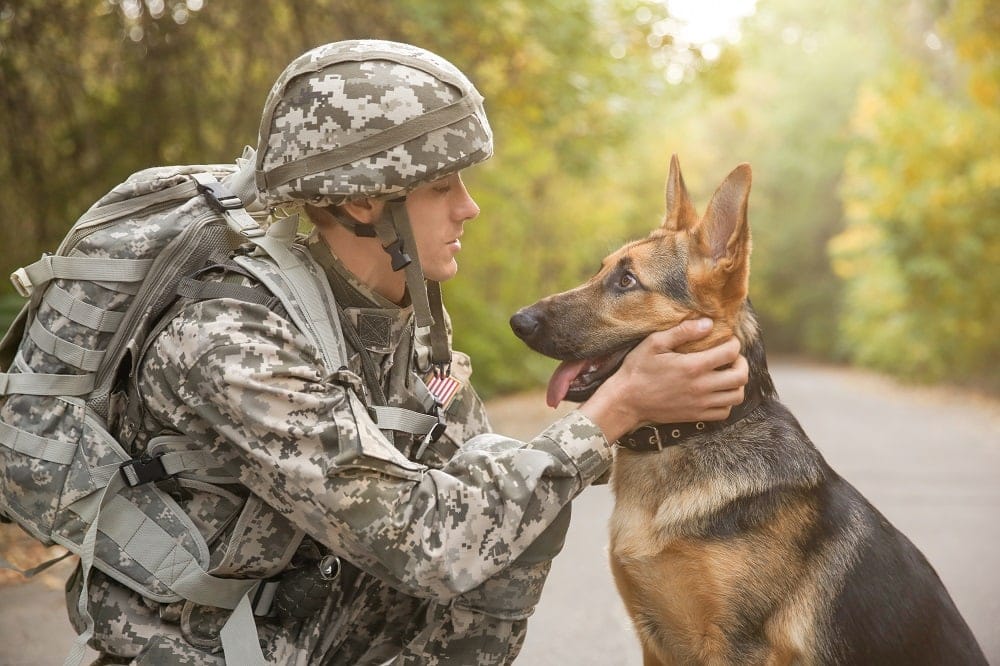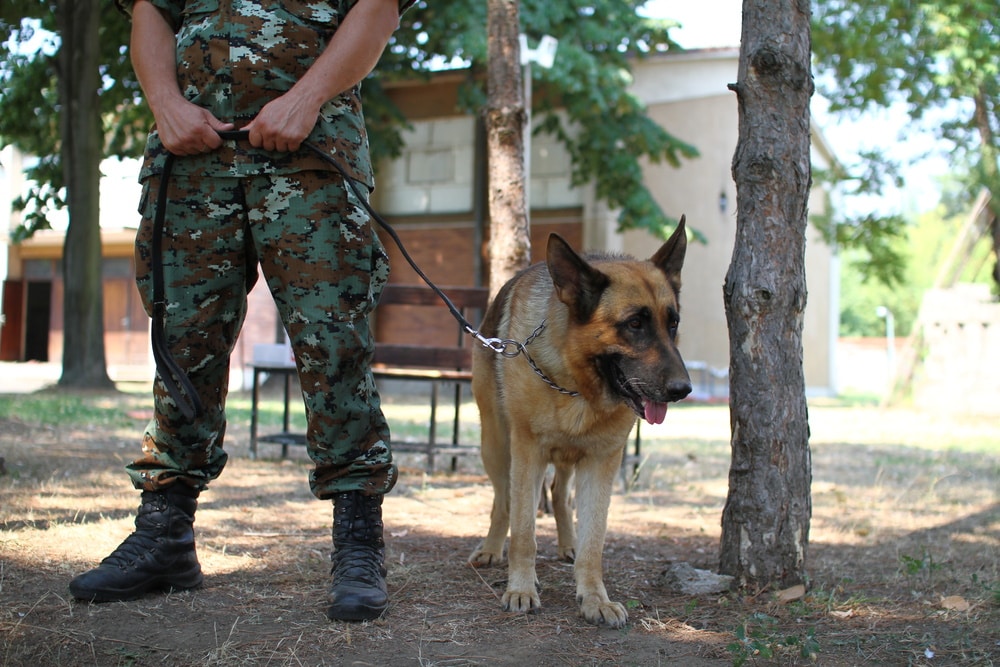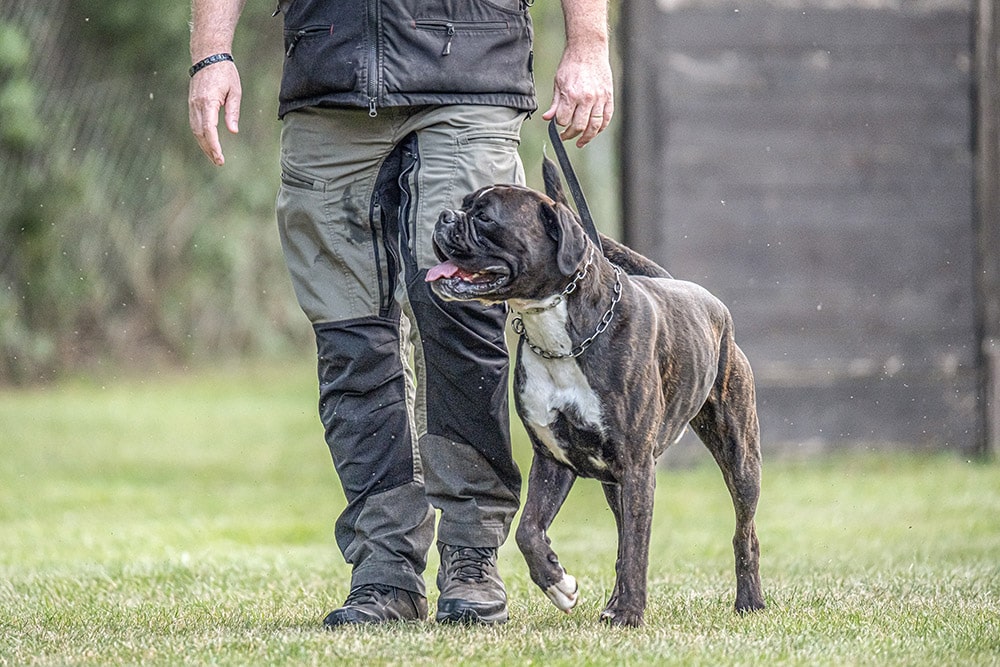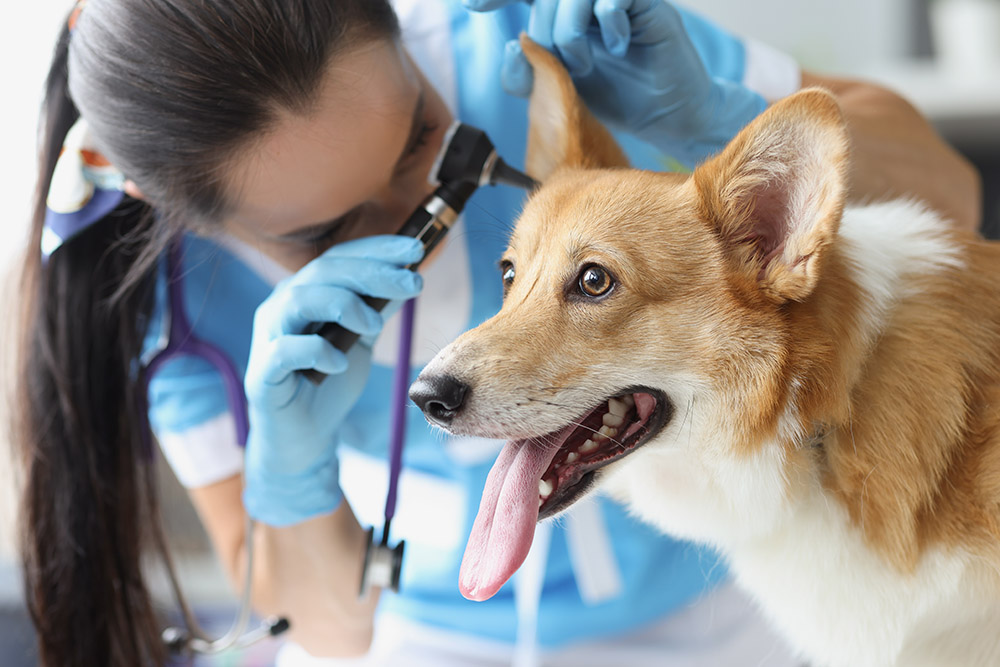- May 3, 2024
How They Protect Their Ears (Vet Approved) – Dogster

The information is current and up-to-date in accordance with the latest veterinarian research.
Dogs have keen senses. Their excellent sense of smell and ability to hear is utilized by the military in combat situations. They can hear subtle sounds that humans cannot, which can be extremely useful. They can also sniff out drugs and weapons much more quickly than we can locate them. Working for the military means that these dogs are often exposed to loud, startling sounds, and with such acute hearing, they are susceptible to damage. Loud noises can be disruptive to their work and harmful to their ears. To combat this issue, the military has begun to use canine ear protection.

How Does It Work?
The military has created a new technology to defend K-9 ears while on the job. The new Canine Auditory Protection System (CAPS) is an example of this military-grade canine ear protection.1 CAPS is a hearing protection tool designed for military working dogs, which protects them from loud noises emitted during training or in action.
Unlike some hearing protection devices, CAPS does not look like a clunky set of earmuffs. Instead, it is designed like a form-fitting, comfortable hood. While in the field, it is crucial that military dogs can hear and respond to their given commands.
Therefore, CAPS is built to defend a dog’s ears from loud, unwanted sounds while still allowing essential vocal commands to come through. This allows a dog’s ears to stay protected without compromising the effectiveness of their fieldwork.

What Are the Different Types of Military Dog Hearing Protection?
There are different types of hearing protection for military pups, but CAPS is among the newest technologies available. Besides CAPS, some canine hearing protection systems have been employed but are considered difficult to use due to their rigidity.
The CAPS, on the other hand, is a flexible snood-like piece of equipment, made from acoustic absorption material. The hood is lightweight and fits comfortably on the wearer’s head while sealing their ears. Unlike other cumbersome devices, CAPS is only an inch thick. This allows a dog to wear the hood without being weighed down or disoriented. Furthermore, dogs wearing CAPS gear can also wear other protective items like goggles.
Besides the hearing devices for military dogs, there are products available for ordinary dogs. If your dog needs protection from frequent, loud noises or is easily startled by unexpected sounds, you can purchase commercial ear protection. It likely will not have the same features and quality as a military-grade device, but it should do just fine for everyday purposes.
You can choose from earplugs, earmuffs, hats, helmets, scarves, and more. Each product has pros and cons, and the only way to determine which is best for your pet is to do a little research.

Where Is It Used?
Since dogs play significant roles in the United States military, from providing security to performing special duties on raids, canine hearing protection can be used in any of those areas. Anywhere a dog may be exposed to aircraft, gunfire, explosions, or other loud noises, canine hearing protection devices are employed.
The use of the devices is not just to ensure a dog’s comfort (although that is a top priority) but also to protect a highly valuable asset. Military dogs can chase down targets, sniff out bombs, and search for wounded soldiers. If a working military dog is not at their best, they cannot support the mission as effectively.

Advantages of Military Dog Hearing Protection
Military hearing defense devices have several advantages; namely, they protect a dog’s hearing. This ensures the dog’s health is in the best state possible while also preserving a valuable military asset. Furthermore, military-grade canine hearing protection is designed with functionality and efficiency in mind.
Regarding CAPS, it’s built to deflect loud, unwanted noises while allowing verbal commands to come through clearly. The thin design allows other protective gear to be worn with it, further keeping the wearer safe.
Disadvantages of Military Dog Hearing Protection
There aren’t many disadvantages to military dog hearing protection, at least as a concept. The main disadvantage of any hearing device is its design. When military devices focus too much on functionality and not enough on comfort, it can be a challenge to convince the dog to wear the gear or keep it on for long periods.
If the device is uncomfortable, some dogs may become distracted by the sensation. However, as hearing protection devices for dogs continue to be perfected, this is becoming less and less of an issue.

Frequently Asked Questions (FAQ)
Learning about military dog hearing protection is fascinating, especially as technology advances. While the average dog owner may never get their hands on military-grade canine protection gear, there are commercial products they can use.
If you are wondering whether your dog needs hearing protection, look at the answers to some frequently asked questions below to help guide you.
Can Any Dog Get Hearing Protection?
Finding military gear for your dog is highly unlikely, and if you somehow manage to get a hold of a military-grade hearing protection device, it will likely be a few years outdated.
However, you can talk to your vet about which commercial protection device is suitable for your dog. One design cannot suit every dog since their heads and ears are shaped differently. For instance, a Chihuahua will need a different set of earplugs than a Great Dane or German Shepherd.

What Are the Signs of Hearing Loss in Dogs?
Hearing loss can occur in any dog regardless of age, and it can be complete or partial hearing loss.
If you suspect that your dog is suffering from hearing loss, check for the following signs:
- A lack of responsiveness to sounds in their environment
- Confusion when trying to determine the source of a sound
- Excessive vocalization
- A change in their bark, such as the volume or quality
- Infrequent ear movements during communication
Can Hearing Loss Be Treated?
The cause of a dog’s hearing loss will determine whether it is reversible. For example, an obstruction inside the ear canal can usually be treated, thus reversing or at least reducing the hearing loss. In contrast, neurological damage is more complicated and is unlikely to be reversible.
However, that doesn’t mean your dog’s quality of life must decline. There are plenty of ways to provide your dog with the best life possible despite their hearing loss. You can talk to your vet about how to modify your home and routine to accommodate your dog’s needs. For example, you can practice using hand signals with your dog to alert them when they need to eat or go outside.

Conclusion
Dogs are a vital part of the military. Since they play so many irreplaceable roles, it is only natural that the military would seek to safeguard such a valuable asset with hearing protection devices. While it is unlikely that you can provide such a device for your dog, commercial products are available to protect your dog’s ears. If your dog needs hearing protection, don’t delay getting them some. Frequent exposure to loud noise can cause irreversible damage.
Featured Image Credit: Africa Studio, Shutterstock
Tags
What do you think?
Related Articles

New Puppy Checklist: Gear You’ll Need for Your New Dog
Getting a new puppy is really exciting, but before you welcome them home, it’s important to prepare your space for them. Since puppies need a

How Big Do Mini Poodles Get? Vet Reviewed Average Weight & Growth Chart – Dogster
The information is current and up-to-date in accordance with the latest veterinarian research. Learn more » When you buy a Miniature Poodle, you might not

Can Police Dogs Smell Nicotine? Vet Verified Facts & Info – Dogster
The information is current and up-to-date in accordance with the latest veterinarian research. Learn more » While cigarette sales have been declining steadily for decades,

How Old Is 5 in Dog Years? Vet-Approved Guide to Each Size of Dog – Dogster
The information is current and up-to-date in accordance with the latest veterinarian research. Learn more » A common method for calculating a dog’s age is

